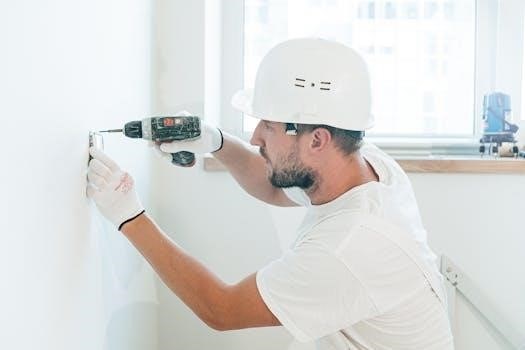Honeywell TH8321WF1001 Installation Overview
The Honeywell TH8321WF1001 is a Wi-Fi touchscreen thermostat designed for ease of use and remote control․ This installation guide provides a basic overview of the steps involved in setting up the thermostat, from separating the wallplate to connecting to your home’s Wi-Fi network․
Getting Started with Installation
Before you begin installing your Honeywell TH8321WF1001 Wi-Fi thermostat, there are a few essential steps to ensure a smooth process․ First, gather all the necessary tools, including a screwdriver, wire stripper, drill, and level․ Then, carefully review the existing thermostat wiring to understand the current system configuration․
Next, turn off the power to your heating and cooling system at the circuit breaker to prevent any electrical hazards during the installation process․ Once the power is off, remove the old thermostat from the wall and disconnect the wires․ Label each wire with the corresponding terminal designation on the old thermostat to avoid confusion during the wiring process․
Compare the wiring configuration of your old thermostat with the wiring diagram provided in the Honeywell TH8321WF1001 installation manual․ This will help you identify the correct terminals for each wire on the new thermostat․ If you are unsure about any of the wiring connections, consult a qualified HVAC technician for assistance․
Finally, ensure that you have your Wi-Fi network name and password readily available, as you will need this information to connect the thermostat to your home network during the setup process․ Following these preliminary steps will help you get started with the installation quickly․
Separating the Wallplate
The initial step in installing your Honeywell TH8321WF1001 thermostat involves separating the wallplate from the thermostat body․ This is a crucial step as the wallplate is what you’ll be mounting to the wall and connecting the wires to․ To begin, locate the button on the top or bottom of the thermostat, depending on the model․
Gently press this button while simultaneously pulling the thermostat body away from the wallplate․ It should detach relatively easily, but avoid using excessive force, as this could damage the thermostat or the wallplate․ If you encounter any resistance, double-check that you are pressing the button firmly and pulling in the correct direction․
Once the thermostat body is separated, carefully set it aside in a safe place to prevent any accidental damage․ Inspect the wallplate for any signs of damage or wear, and ensure that all the necessary mounting hardware is included․ At this point, you should have a clear view of the wiring terminals on the wallplate, which will be used to connect the thermostat to your heating and cooling system․
Proceed with the next step, which is mounting the wallplate to the wall, only after successfully separating the wallplate from the thermostat․
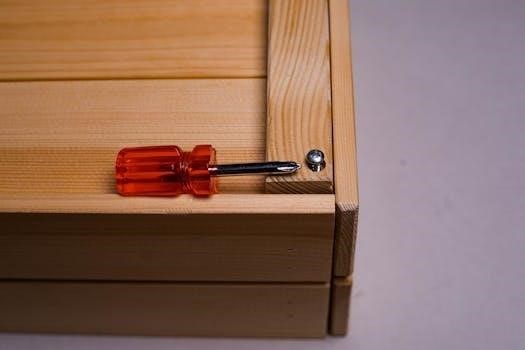
Mounting the Wallplate
Begin by positioning the wallplate on the wall where the old thermostat was․ Use a level to ensure it’s straight․ Mark the screw locations, drill pilot holes, and then secure the wallplate using appropriate screws․
Drilling Holes for Wall Anchors
Before securing the wallplate, it’s crucial to ensure it’s firmly attached to the wall․ If you’re mounting the wallplate on drywall or plaster, you’ll likely need to use wall anchors․ Wall anchors provide a secure point for the screws to grip, preventing the thermostat from becoming loose over time․
First, hold the wallplate against the wall at the desired location, ensuring it’s level․ Use a pencil to mark the locations for the mounting screws through the holes in the wallplate․ Remove the wallplate and use these marks as guides for drilling the holes․
The size of the drill bit will depend on the type of wall anchors you’re using․ For drywall, a 3/16-inch drill bit is often recommended․ For plaster, a slightly larger 7/32-inch drill bit might be necessary․ Consult the instructions that come with your wall anchors for the recommended drill bit size․
When drilling, apply gentle pressure and maintain a steady hand to create clean, precise holes․ Avoid drilling too deep, as this can weaken the wall․ Once the holes are drilled, insert the wall anchors into the holes, tapping them gently with a hammer if needed until they are flush with the wall․
Securing the Wallplate
With the wall anchors properly installed, it’s time to secure the wallplate to the wall․ Carefully align the wallplate with the drilled holes and the installed wall anchors․ Ensure that the wire hole in the wallplate is positioned correctly to allow for easy access to the thermostat wires․
Using the provided mounting screws, gently screw the wallplate into the wall anchors․ Avoid overtightening the screws, as this can strip the anchors or damage the wallplate․ Tighten the screws until the wallplate is snug against the wall and doesn’t wobble․
Double-check that the wallplate is level before proceeding․ A level wallplate ensures that the thermostat will be mounted straight and will look aesthetically pleasing․ If the wallplate is not level, loosen the screws slightly and adjust its position until it is․
Once you are satisfied with the wallplate’s position and stability, give the screws a final tightening to ensure it’s securely fastened․ The wallplate should now be ready to accept the thermostat unit․
Wiring Connections
Connecting the wires correctly is crucial for the proper functioning of your Honeywell TH8321WF1001 thermostat․ Before you begin, ensure that the power to your HVAC system is turned off at the breaker to prevent electrical shock․ Carefully identify each wire coming from your HVAC system․
Refer to the wiring diagram in the installation manual to determine the correct terminal for each wire․ Match the wire labels (e․g․, R, C, W, Y, G) to the corresponding terminals on the wallplate․ If you are unsure about any of the wire connections, consult a qualified HVAC technician․
Use a small screwdriver to loosen the terminal screws on the wallplate․ Insert each wire into its designated terminal and tighten the screw to secure it in place․ Ensure that the wires are firmly attached and do not come loose easily․
Double-check all the wiring connections to ensure they are accurate and secure․ Incorrect wiring can damage your thermostat or HVAC system․ Once you are confident that all the wires are properly connected, you can proceed to the next step․
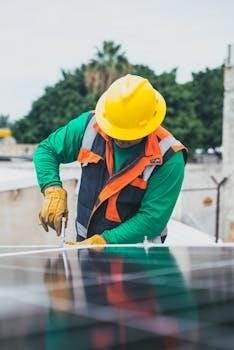
Connecting to Wi-Fi Network
To connect your Honeywell TH8321WF1001 to your Wi-Fi network, follow the on-screen prompts․ Select your network from the list and enter the password․ This enables remote access and scheduling features via the Honeywell app․
Checking Signal Strength
After attempting to connect to your Wi-Fi network, it’s crucial to verify the signal strength at the thermostat’s location․ Weak signal strength can lead to intermittent connectivity issues and impact the thermostat’s ability to receive updates or respond to remote commands effectively․ The Honeywell TH8321WF1001 typically displays a Wi-Fi signal indicator on its screen․ A full or mostly full indicator suggests a strong signal, while a weak or empty indicator suggests a poor signal․
If the signal strength is weak, consider relocating your Wi-Fi router or access point closer to the thermostat․ Alternatively, you might explore using a Wi-Fi range extender to boost the signal strength in that area of your home․ Retest the signal strength on the thermostat after making any adjustments to ensure the connection is stable and reliable․ Consistent connectivity is essential for optimal performance and access to all of the thermostat’s features․ A strong, stable connection guarantees seamless integration with the Honeywell app, enabling effortless temperature adjustments․
Troubleshooting Unsuccessful Connection
Encountering difficulties while connecting your Honeywell TH8321WF1001 to your Wi-Fi network can be frustrating, but several common issues can be addressed systematically․ Firstly, double-check that you’ve entered the correct Wi-Fi password․ Passwords are case-sensitive, so ensure accuracy․ Restart your router and the thermostat itself, as this often resolves temporary glitches․ Verify that your Wi-Fi network is functioning correctly by connecting other devices․
Confirm that the thermostat is within range of your Wi-Fi signal․ If the signal is weak, consider moving the router closer or using a Wi-Fi extender․ Ensure your router’s security settings are compatible with the thermostat (WPA2 is generally recommended)․ Some older routers may require updated firmware․ If problems persist, consult the Honeywell support website or contact their customer service for further assistance․ Documenting the specific error messages you encounter can aid in quicker resolution․ By systematically addressing these potential issues, you can successfully connect your thermostat․
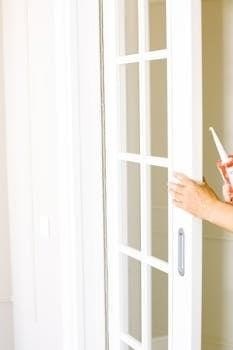
Installer Setup (ISU)
The Installer Setup (ISU) menu on the Honeywell TH8321WF1001 allows advanced configuration of the thermostat to match your specific heating and cooling system․ Accessing the ISU requires entering a password, typically the current date code․ Once inside, you’ll find a series of numbered settings that control various aspects of the thermostat’s operation․
Key settings include application type (residential or commercial), thermostat type (programmable or non-programmable), and system settings to match your equipment, like heat pump or conventional furnace configurations․ It’s crucial to consult the installation manual to understand each setting’s function and select the appropriate values for your system․ Incorrect settings can lead to inefficient operation or even damage to your HVAC equipment․ Make note of the original settings before making any changes, and if unsure, consult a qualified HVAC professional for assistance in configuring the ISU․
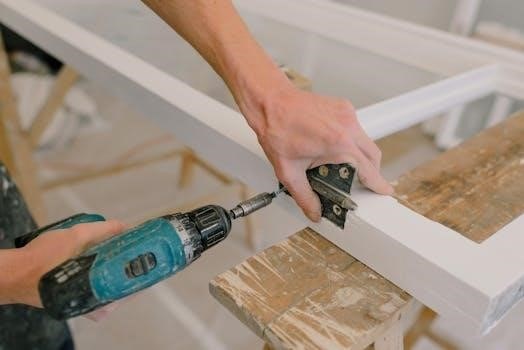
Password for Installer Options
Accessing the installer options on the Honeywell TH8321WF1001 thermostat requires a specific password․ This password is a security measure to prevent unauthorized modification of advanced settings that could affect the thermostat’s performance and the connected HVAC system․ Typically, the default password is the current date code, formatted as month and day (MMDD)․
To enter the installer options, navigate to the menu on the thermostat’s display and select “Installer Options․” The thermostat will then prompt you for the password․ Enter the four-digit date code and press “Done․” If the password is correct, you will be granted access to the Installer Setup (ISU) menu, where you can adjust various parameters to customize the thermostat’s behavior․ If you encounter difficulties or the default password does not work, consult the installation manual or contact Honeywell support for assistance in resetting or retrieving the password․
Regulatory Information
The Honeywell TH8321WF1001 thermostat complies with various regulatory standards to ensure its safety and performance․ This includes adherence to FCC (Federal Communications Commission) regulations in the United States and similar standards in other regions․ Compliance with these regulations ensures that the thermostat does not cause harmful interference to other electronic devices and operates within acceptable limits for radio frequency emissions․
Furthermore, the TH8321WF1001 is RoHs compliant, signifying that it adheres to the Restriction of Hazardous Substances directive․ This directive restricts the use of certain hazardous materials in electrical and electronic equipment, promoting environmental protection and reducing the risk of exposure to harmful substances․ The installation manual typically includes detailed information regarding these regulatory compliances, as well as warnings and safety precautions to be observed during installation and operation․ Always refer to the manual for the most up-to-date regulatory information and safety guidelines․
